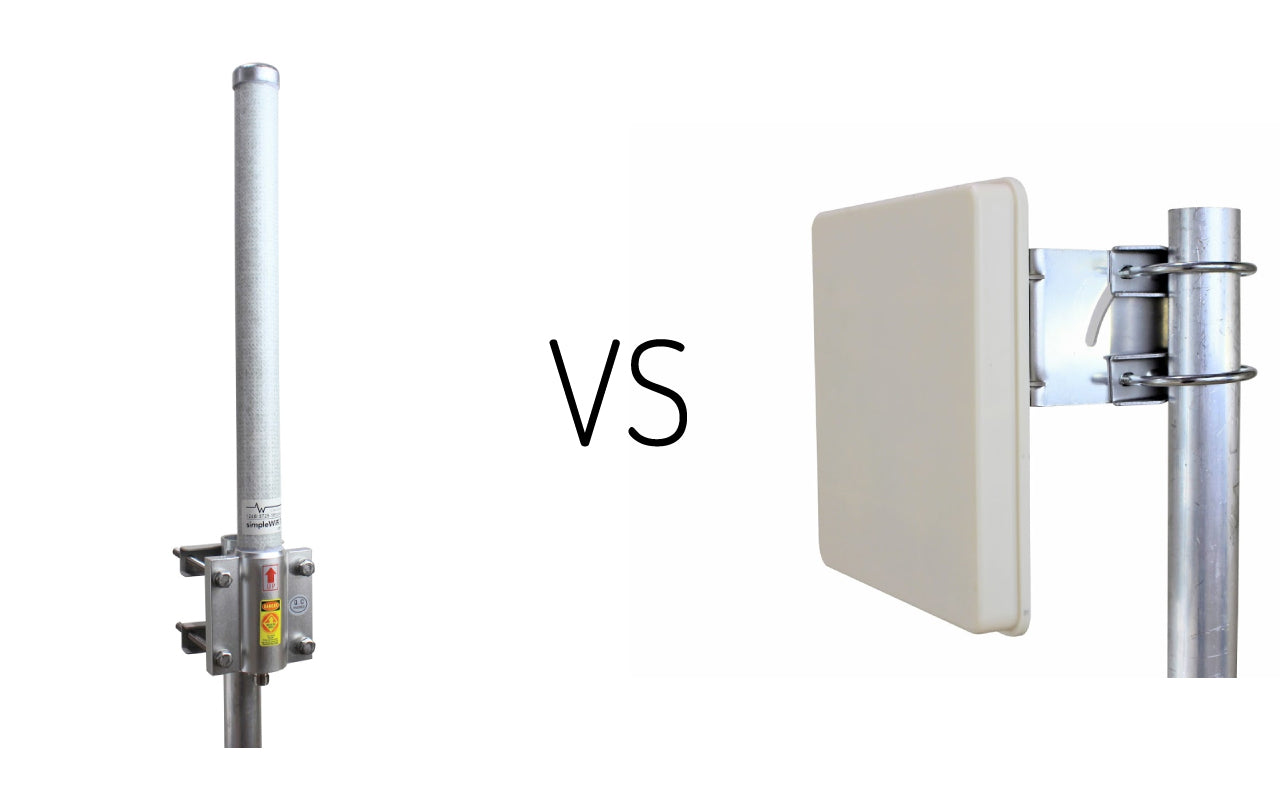
Omni-Directional vs. Directional Antenna
Each antenna has a specific use case, and in this article I would like to explain the differences between the Omni-Directional antenna versus the Directional antenna. Much like a lantern vs. a flashlight, the Omni-Directional antenna vs. the Directional antenna is a case-specific choice.
I will not go too in depth about the connection types on our antennas. However, I would like to point out our indoor Omni-Directional and Directional have SMA-RP male ports. This makes them easily attachable to routers that have detachable antennas. However, our outdoor models have the N connections. Our inventory has the cables you need for getting your device connected to your antenna.
The Omni-Directional antenna emits a spherical shaped signal. This is much like a common light bulb in our homes. This makes the Omni-Directional antenna an ideal choice for many situations. It works great for vehicles on the move, such as campers, RVs, boats, semi-cabs, etc... that are looking to receive WiFi from resorts, clubhouses, hotels, campgrounds, restaurants, etc... Omni-Directional antennas also work well when you are receiving from a signal that you are unsure where it originates because its signal is received from all angles Another great use is to broadcast a hotspot from a central area of a location such as a park, fairgrounds, backyard, etc...
The Omni-Directional antenna has an advantage over the Directional antenna in a certain areas:
- Connecting to a hotspot while on a moving vehicle.
- Connecting to a hotspot that has an unknown location.
- Broadcasting a hotspot from the center of a location to fill the area.
On the other hand, like a flashlight, the Directional antenna will allow for focusing the signal towards a specific location and focusing the signal intensely on the targeted spot. Also, Directional antennas are great for point-to-point connections. In a point-to-point situation, two antennas are used. One antenna is used to broadcast a hotspot while a second antenna is used that will connect to the hotspot that the first antenna is broadcasting. The antennas are pointed at directly at each other so the connection is nearly perfect giving the potential for higher bandwidth. Lastly, since the signal is in more of a cone shape, and only goes in the direction that it is pointed, less people have access to it and makes the signal more secure.
Here are some situations that make the Directional antenna a prime choice over the Omni-Directional antenna:
- Broadcasting a hotspot or connecting to a hotspot when you know the location
- Broadcasting a hotspot or connecting to a hotspot over long distances
- Point-to-point; Using two antennas to create a strong connection.
- Security is a top concern.

 (305) 798-8505
(305) 798-8505

Comments
Leave a comment